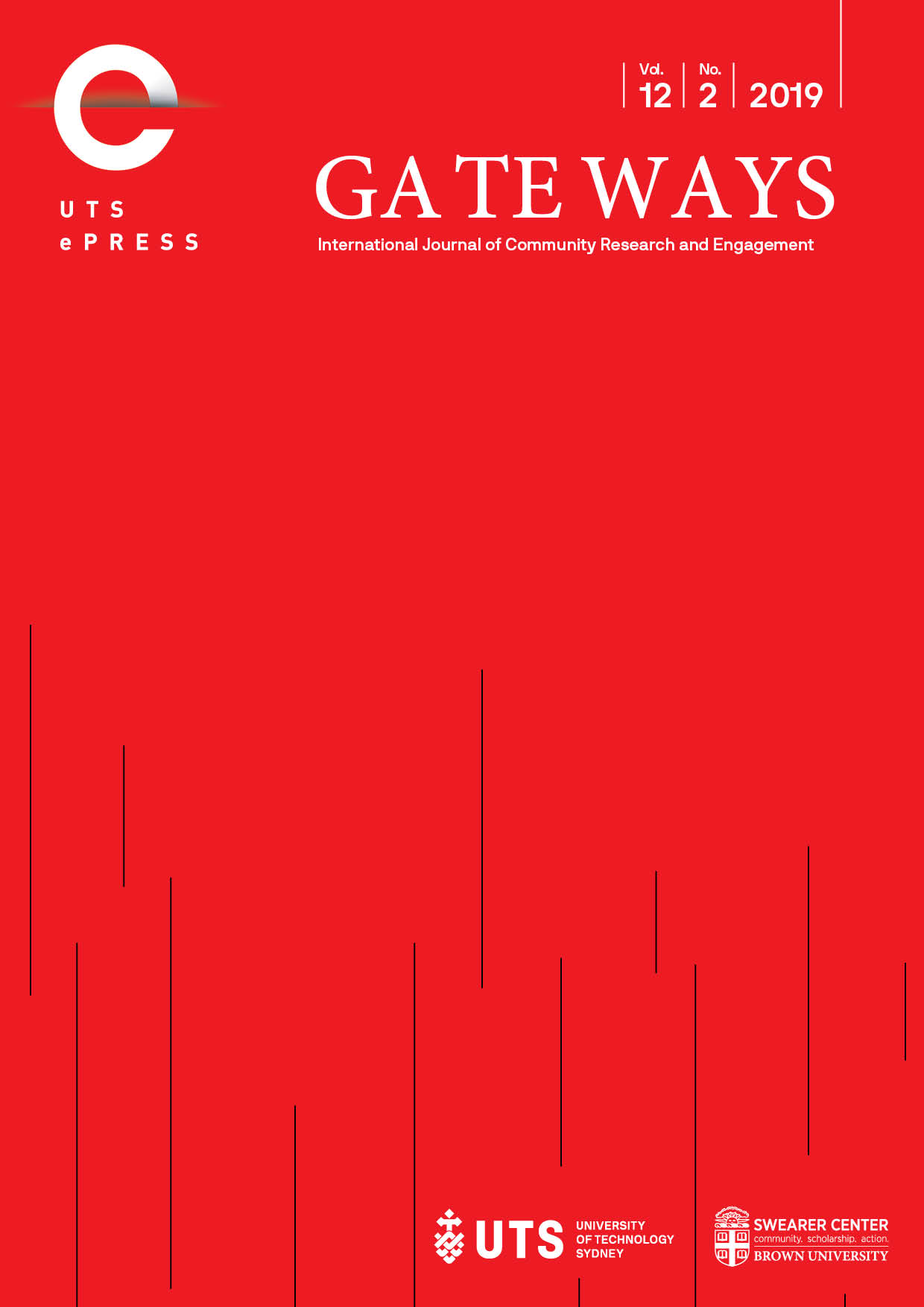Activating social change together: A qualitative synthesis of collaborative change research, evaluation and design literature
Main Article Content
Abstract
Researchers, evaluators and designers from an array of academic disciplines and industry sectors are turning to participatory approaches as they seek to understand and address complex social problems. We refer to participatory approaches that collaboratively engage/partner with stakeholders in knowledge creation/problem solving for action/social change outcomes as collaborative change research, evaluation and design (CCRED). We further frame CCRED practitioners by their desire to move beyond knowledge creation for its own sake to implementation of new knowledge as a tool for social change. In March and May of 2018, we conducted a literature search of multiple discipline-specific databases seeking collaborative, change-oriented scholarly publications. The search was limited to include peer-reviewed journal articles, with English language abstracts available, published in the last five years. The search resulted in 526 citations, 236 of which met inclusion criteria. Though the search was limited to English abstracts, all major geographic regions (North America, Europe, Latin America/Caribbean, APAC, Africa and the Middle East) were represented within the results, although many articles did not state a specific region. Of those identified, most studies were located in North America, with the Middle East having only one identified study. We followed a qualitative thematic synthesis process to examine the abstracts of peer-reviewed articles to identify practices that transcend individual disciplines, sectors and contexts to achieve collaborative change. We surveyed the terminology used to describe CCRED, setting, content/topic of study, type of collaboration, and related benefits/outcomes in order to discern the words used to designate collaboration, the frameworks, tools and methods employed, and the presence of action, evaluation or outcomes.
Forty-three percent of the reviewed articles fell broadly within the social sciences, followed by 26 percent in education and 25 percent in health/medicine. In terms of participants and/or collaborators in the articles reviewed, the vast majority of the 236 articles (86%) described participants, that is, those who the research was about or from whom data was collected. In contrast to participants, partners/collaborators (n=32; 14%) were individuals or groups who participated in the design or implementation of the collaborative change effort described. In terms of the goal for collaboration and/or for doing the work, the most frequently used terminology related to some aspect of engagement and empowerment. Common descriptors for the work itself were ‘social change’ (n=74; 31%), ‘action’ (n=33; 14%), ‘collaborative or participatory research/practice’ (n=13; 6%), ‘transformation’ (n=13; 6%) and ‘community engagement’ (n=10; 4%). Of the 236 articles that mentioned a specific framework or approach, the three most common were some variation of Participatory Action Research (n=30; 50%), Action Research (n=40; 16.9%) or Community-Based Participatory Research (n=17; 7.2%). Approximately a third of the 236 articles did not mention a specific method or tool in the abstract. The most commonly cited method/tool (n=30; 12.7%) was some variation of an arts-based method followed by interviews (n=18; 7.6%), case study (n=16; 6.7%), or an ethnographic-related method (n=14; 5.9%). While some articles implied action or change, only 14 of the 236 articles (6%) stated a specific action or outcome. Most often, the changes described were: the creation or modification of a model, method, process, framework or protocol (n=9; 4%), quality improvement, policy change and social change (n=8; 3%), or modifications to education/training methods and materials (n=5; 2%). The infrequent use of collaboration as a descriptor of partner engagement, coupled with few reported findings of measurable change, raises questions about the nature of CCRED. It appears that conducting CCRED is as complex an undertaking as the problems that the work is attempting to address.
Article Details
Issue
Section
Authors who submit articles to this journal from 31st March 2014 for publication, agree to the following terms:
a) Authors retain copyright and grant the journal right of first publication with the work simultaneously licensed under a Creative Commons Attribution License that allows others to share and adapt the work with an acknowledgement of the work's authorship and initial publication in this journal.
b) Authors are able to enter into separate, additional contractual arrangements for the non-exclusive distribution of the journal's published version of the work (e.g., post it to an institutional repository or publish it in a book), with an acknowledgement of its initial publication in this journal.
c) Authors are permitted and encouraged to post their work online (e.g., in institutional repositories or on their website) prior to and during the submission process, as it can lead to productive exchanges, as well as earlier and greater citation of published work (See The Open Access Citation Advantage Service). Where authors include such a work in an institutional repository or on their website (ie. a copy of a work which has been published in a UTS ePRESS journal, or a pre-print or post-print version of that work), we request that they include a statement that acknowledges the UTS ePRESS publication including the name of the journal, the volume number and a web-link to the journal item.
d) Authors should be aware that the Creative Commons Attribution (CC-BY) License permits readers to share (copy and redistribute the work in any medium or format) and adapt (remix, transform, and build upon the work) for any purpose, even commercially, provided they also give appropriate credit to the work, provide a link to the license, and indicate if changes were made. They may do these things in any reasonable manner, but not in any way that suggests you or your publisher endorses their use.
For Volume 6 (2013) and before, the following copyright applied:
Articles published by UTSePress are protected by copyright which is retained by the authors who assert their moral rights. Authors control translation and reproduction rights to their works published by UTSePress. UTSePress publications are copyright and all rights are reserved worldwide. Downloads of specific portions of them are permitted for personal use only, not for commercial use or resale. Permissions to reprint or use any materials should be directed to UTSePress.
